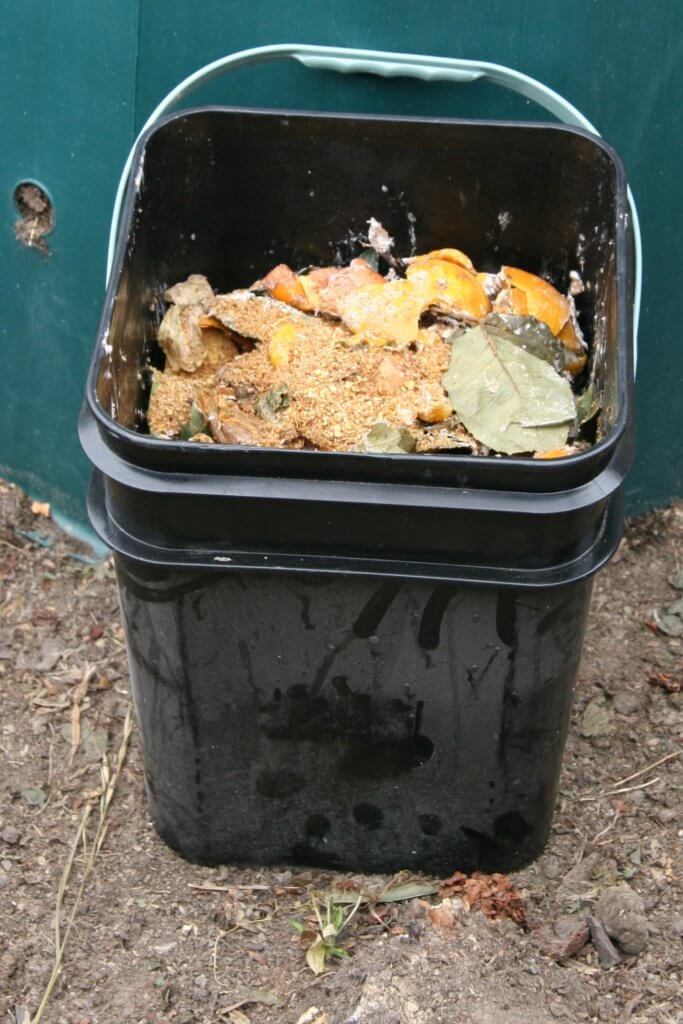Bokashi 101: Everything you need to know to get started

You are probably familiar with the concept of composting, but have you ever heard of Bokashi composting?
Bokashi is a form of fermented composting which is done on a small scale and in a sealed container. It’s perfect for people who don’t have the space for a compost pile, have a small garden or who need compost in a hurry.
Why should you use a Bokashi?
Unlike traditional composting that requires airflow, Bokashi is an anaerobic style of composting, meaning that the food decomposes without oxygen in a sealed container. The food decomposes much faster this way.
This style of composting is very versatile in the sense that it can compost all your scraps from the kitchen, including leftovers, meats and cheese which you wouldn’t add to regular composting systems or onions and citrus which you can’t put in a worm farm.
Bokashi does not require stirring or aeration like regular composting. It also does not need carbon rich materials, such as leaves or newspapers – it can be purely food scraps.
What you need for a Bokashi:

All images supplied by Zing Bokashi
You will need an airtight container to be your Bokashi bin. The container must have a way to allow for drainage of the liquid that is created in the bokashi process – this may be a tap or two buckets sitting inside of each other with drainage holes in the inside bucket.
Bokashi bins can be purchased online from Zing Bokashi or Rotaform. You can also buy other Bokashi bins from hardware stores like Bunnings or Mitre 10.
Want to make your own? Check out this step by step guide to make one using paint buckets.
You will also need a mixture known as a bokashi sprinkle or bran. The sprinkle has microbes added which ferment the food scraps. The sprinkle can be bought from hardware stores or made at home.
How to Bokashi:
- To start the bokashi process, add a small layer of the sprinkle to the bottom of the bucket.
- Add food waste once or twice daily to the bucket, be careful not to open the container too often, as that will slow the bokashi process. Whilst any kind of food can be added, do not add any liquids or oil.
- Add 1-2 tablespoons of bokashi sprinkle per 6 cm layer of food.
- Squash down the food to push out the air as you go. Tip: Use a potato masher for this step. Close the bucket lid tightly after use.
- As the kitchen scraps ferment, a liquid may form at the bottom of the container. You should drain this liquid every 2-3 days. This liquid can be used as a drain cleaner for toilets, sinks and other drains when undiluted. When diluted to a 1:100 ratio with water, or 2-3 tablespoons for 5 liters, the liquid makes an excellent fertilizer in the garden. Find out more here.
- When your bucket is full, close the lid and keep it in a warm place, but out of direct sunlight.
- Leave the food to ferment for about 10-14 days. Don’t forget to drain off the liquid every 2-3 days. The food waste should smell like pickles, and will develop a white mould on top, this means the system is working well.

The white mould that will grow on your food (Photo: Zing Bokashi)
- After the 10-14 days, the food scraps will still resemble the food waste that you put in, but it will be pickled. The food can be added to a compost pile, worm bin or buried in the ground to allow it to compost further.
How to bury your fermented food waste:
Dig a trench (about 30cm deep and big enough to take all of the food waste from the bucket) in your garden and place the fermented food waste into it.

Mix some soil through the food waste and then cover completely with soil (the layer should be at least 25cm deep). The food will continue to decompose, and should be barely recogniseable after a month.
After 10 days you will be able to plant on top of the areas where you buried the food waste.
What to do if you don’t have a garden:
If you are interested in using a Bokashi but you don’t have a garden, or one large enough to handle all of your food waste, you may be able to find a neighbour, friend or colleague who would be willing to accept your fermented food waste to add to their garden or compost. If you don’t know of anyone, try searching the Share Waste website to see if you can find someone nearby.